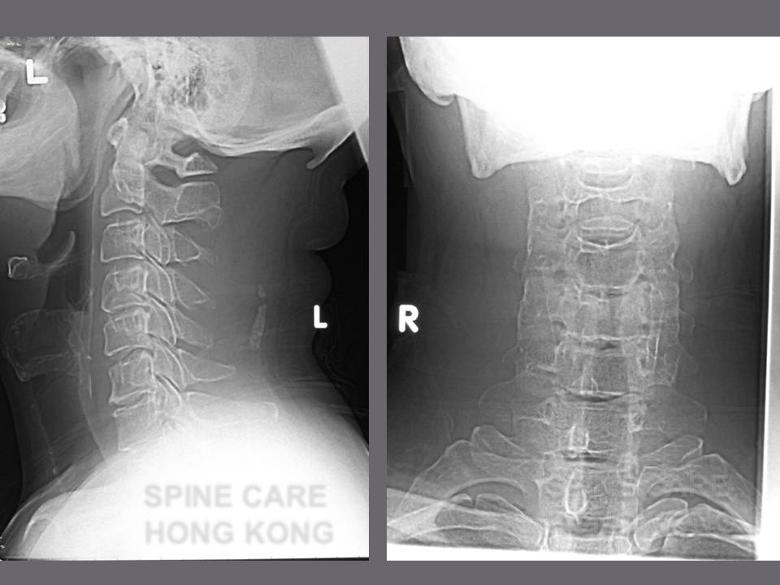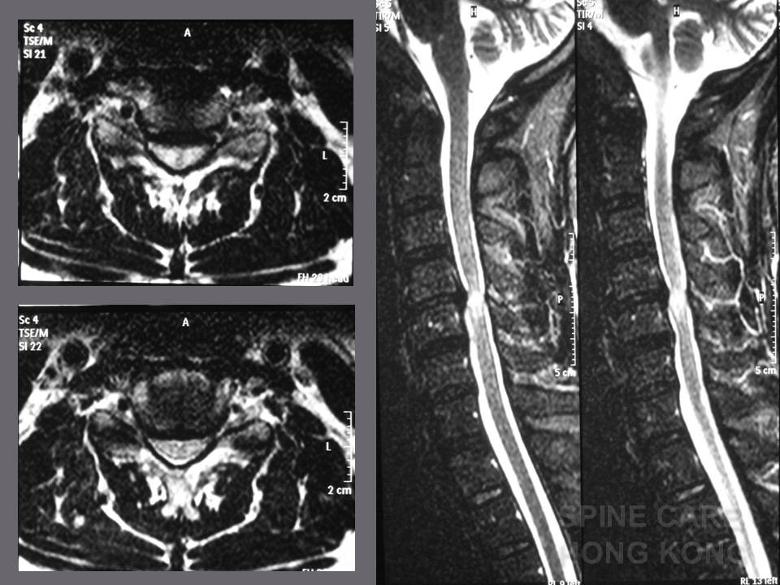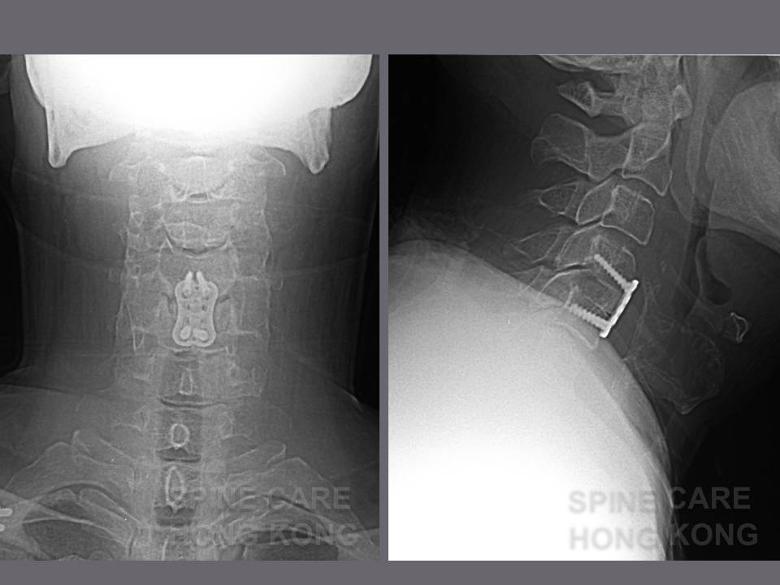
|
Anterior Cervical Discectomy and Fusion (ACDF) |
|
This is the standard procedure and is traditionally regarded as the gold standard. In the USA and possibly world-wide it is the most commonly performed cervical spine procedure and has excellent results, especially recently with the advent of better fixation plates. Indications for surgery include conditions that cause cervical cord or nerve root compression from the front side of the spinal canal, these include acute disc prolapse, cervical spondylosis (disc degeneration) with osteophyte impingement into the spinal canal causing pressure on the spinal cord, or for a more laterally directed disc prolapse or bone spur causing pressure over the nerve roots before as they exit from the spine. The surgical wound is usually made over the front of the neck and is around 4cm in length. Inside the soft tissues are gently mobilised out of the way to gain access to the front of the spine. The pathological disc and any surrounding bone spurs are removed to decompress the spinal canal. The space thus created is then filled with a bone graft. A fixation plate may be used to stabilize and immobilize the decompressed level. Whilst there may be newer treatment options, ACDF is still the treatment of choice for many conditions including cases of advanced degeneration, instability, and after cervical spine trauma. It remains the gold standard against which other newer procedures are compared. |
|
Copyright © 2008 Spine Care Hong Kong |
|
EXAMPLE Male late forties Complaint of Upper and Lower limb numbness
Examination: Hyperreflexia Inverted Radial Reflex Positive Hoffmann reflex Positive Lhermitte’s Sign Positive No Motor Deficit |
|
MRI Compressive Disc Bulge @ C4-5 |
|
ACDF C4-5 with Plating |



|
Cervical Spondylotic Myelopathy Cord Compression and Myelomalacia @ C4-5 |
|
Decompression with ACDF C4-5 |
|
Diagnosis: |
|
Procedure: |

|
SPINE CARE HONG KONG |
|
ACCURATE DIAGNOSIS, STRUCTURED TREATMENT |

